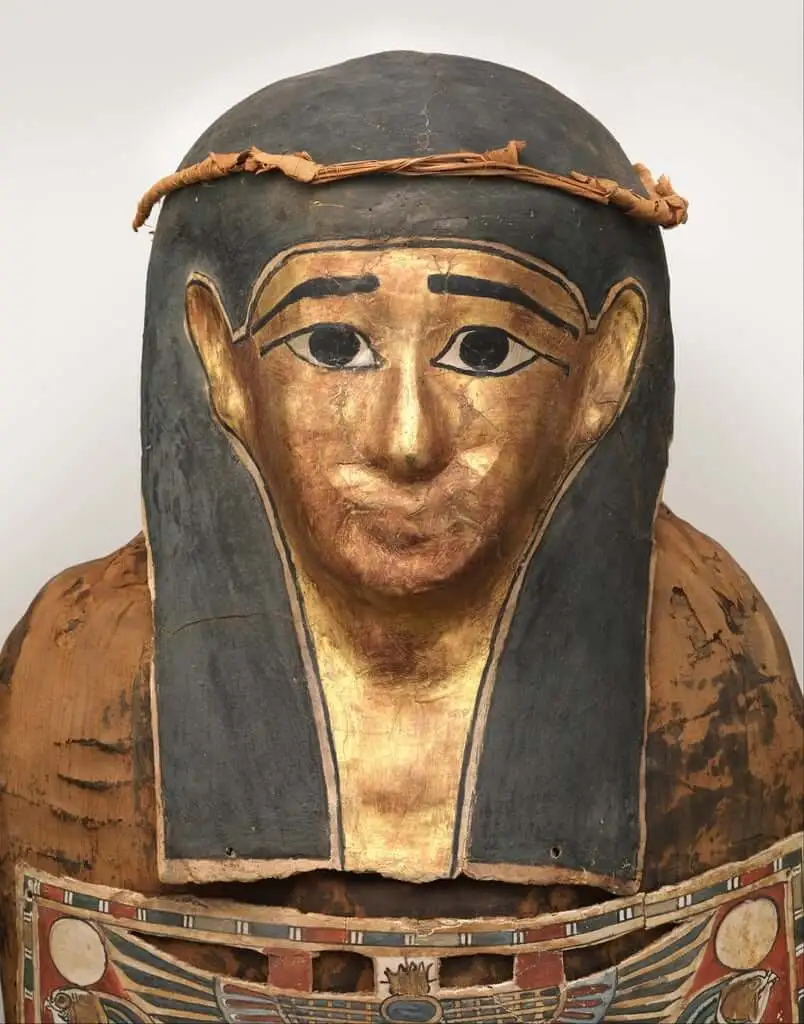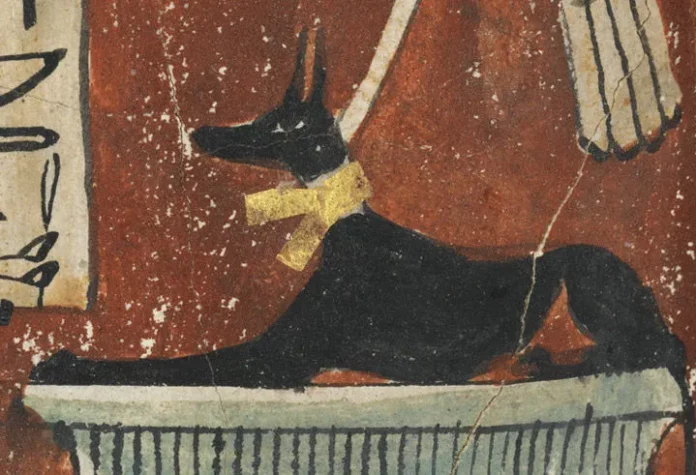In a small town called Akhmim, nestled in the heart of Middle Egypt, there lived a devoted priest named Nesmin. His name, meaning “The One Who Belongs to (the god) Min,” reflected his deep connection to the deity he served. Nesmin followed in the footsteps of his father, Djedhor, who was also a priest, and his mother, Tadiaset, a musician who played the sistrum, a ritual rattle, in the service of Min.
Nesmin’s life was dedicated to his priestly duties. Every day, he clothed the statue of Min and cared for other gods’ statues and their temple home. He spent countless hours performing rituals, ensuring that the gods were honored and their temple maintained. Nesmin’s commitment to his role was unwavering, and he found great fulfillment in his sacred responsibilities.

As Nesmin grew older, he began to suffer from arthritis, a condition that caused him considerable pain. Despite this, he continued his work until he passed away as a middle-aged man. His body was carefully mummified, and thirty-one amulets were placed between the wrappings to magically bestow powers of regeneration upon him. Among these amulets were a wadjet eye on his forehead, representing protection, and amulets of the god Thoth on each wrist, symbolizing wisdom.
Nesmin’s coffin, adorned with hieroglyphic texts, detailed his titles and genealogy. It revealed that, like his father and many paternal ancestors, Nesmin had been a priest of Min, the god of fertility, and Khonsu, the god of the moon and healing. The coffin’s decoration reflected a Ptolemaic style typical of Akhmim, and it provided a glimpse into the rich cultural and religious life of the period.

More than 100 years ago, Nesmin’s mummy, along with his intricately decorated coffin, found a new home at The Metropolitan Museum of Art (The Met) in New York. Over the years, Nesmin’s mummy became a popular exhibit, sparking curiosity and wonder among museum visitors. Some visitors mistakenly believed the mummy to be “empty,” thinking it had been unwrapped and then reassembled. However, the truth was far more fascinating.
In 2011, a team from NYU Langone Medical Center’s Department of Radiology conducted a CT scan of Nesmin’s mummy. The scan revealed the thirty-one amulets still nestled within the wrappings, providing a clear view of these ancient artifacts. This discovery allowed The Met to update the label text in the new galleries and to display similar amulets next to Nesmin’s mummy.

Despite occasional inquiries about unwrapping the mummy to retrieve the amulets, the museum has always maintained that doing so would be both destructive and disrespectful. Modern technology has enabled us to explore the hidden treasures within the mummy without causing any harm.
The exact location of Nesmin’s tomb remains a mystery, but the inscriptions on his coffin and the style of his cartonnage elements, made from linen or papyrus mixed with plaster, indicate that he lived in the third or second century B.C. in Akhmim. This town was an important religious and cultural center closely associated with the fertility god Min, whom Nesmin served with unwavering devotion.
Through the inscriptions on his coffin, we learn about Nesmin’s family. His father, Djedhor, shared his priestly duties, and his mother, Tadiaset, contributed to the religious life of Akhmim with her musical talents. Nesmin’s life and legacy are beautifully preserved in his mummy, a testament to his dedication and the rich cultural heritage of ancient Egypt.
Today, as visitors gaze upon Nesmin’s mummy and the accompanying amulets, they are transported back in time to a world where gods and rituals were central to daily life. Nesmin’s story continues to captivate and inspire, reminding us of the enduring power of faith and the timeless quest for immortality.




